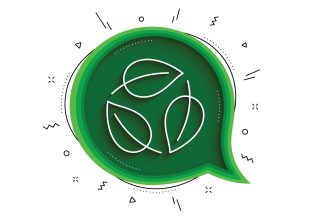VOICES
You’ve reached your limit. Here’s how you can stretch it
By Jennifer Abrams
Categories: Collaboration, Continuous improvement, FundamentalsFebruary 2022
Collaboration is one of the most frequently used words in education and, in some ways, the least taught. Over two decades as a teacher, coach, and professional development facilitator in a California school district, I learned that I had a credential in my subject, but I didn’t have a credential in how to collaborate and work with other adults.
During the last decade, my consulting work has focused on filling that gap by supporting adult-to-adult communication in schools. I constantly ask myself and the educators with whom I work: How do we stretch ourselves at our learning edges to become our best adult selves at school? And how do we communicate well with one another in service of our students (Abrams, 2021)? This ongoing column for The Learning Professional will respond to that inquiry in ways that are designed to be actionable and helpful across the pre-K-12 continuum and beyond.
Stretching is surely a familiar concept to readers. Stretching ourselves is what we have been doing now for months. With educators navigating hybrid and modified in-person teaching, student mental health concerns, discipline challenges, teacher and substitute shortages, and political discussions about what to teach and how, asking one another to be even more resilient and simply hang in there pushes many of us right to the edge. But stretching at our edges doesn’t have to be a burden. In fact, it can help us get through this time.

In particular, we can all benefit from building our adult-to-adult communication skills. Our ability to collaborate and our willingness to engage respectfully with one another matters for the health of the school and the collective well-being of all within it, especially as the demands on us keep increasing and the challenges facing our schools intensify.
Our ability to collaborate & our willingness to engage respectfully w/ one another matters for the health of the school & the collective well-being of all within it. @jenniferabrams #TheLearningPro Share on XWe can and must intentionally ask ourselves how to live respectfully and for the good of the whole community, even in the midst of the challenges we are facing. The following are important steps on that journey.
Do inner work to contribute to the whole. We all want to be a value add to our teams, and that means doing the work to become more humane and effective team members. We all must do the inner work of managing emotions and energy and the outer work of using our body language mindfully and choosing respectful wording. We also need to build our skills to do active listening, learn how to apologize, and make space for all voices.
Learn to effectively work with cognitive conflict. Listening to a variety of perspectives is a good thing, because it asks us to be open to complexity and listen with an open mind. But when we are stressed, we may not engage in challenging conversations in the best of ways. Learning to navigate conflict effectively is essential. As Timothy J. Clark states in The 4 Stages of Psychological Safety: Defining the Path to Inclusion and Innovation (2020), a team needs to work with more intellectual friction and less social friction to innovate and solve challenges.
Be responsible for your responses. All 100% of what you say is your responsibility — your questions, comments, concerns, reactions. You have agency over how you communicate about emotional topics, even if you aren’t the person setting the agenda or starting the conversation. “How might I communicate my perspective humanely in a kind, supportive, and nonaggressive manner?” is a question we all need to be asking ourselves, especially in these divisive times.
Speak up, thoughtfully. When you see a change that could be helpful, share it — with respect, tact, and consideration. Make your words productive, solution-oriented, and humane. If you notice the group isn’t hearing from everyone, create openings for others to contribute. If you recognize that you might have overstepped, apologize. If you offer feedback, make it actionable and constructive.
In this current climate of tension and fear, we need to create environments in which everyone is acknowledged, feels a sense of belonging, and is treated justly, starting with our colleagues and collaborators. Our students look to us to see what being an adult looks like. Let’s show them our best selves.
References
Abrams, J. (2021). Stretching your learning edges: Growing (up) at work. MiraVia.

Jennifer Abrams (jennifer@jenniferabrams.com) is an independent communications consultant and leadership coach.
Categories: Collaboration, Continuous improvement, Fundamentals
Recent Issues
LEARNING DESIGNS
February 2025
How we learn influences what we learn. This issue shares essential...
BUILDING BRIDGES
December 2024
Students benefit when educators bridge the continuum of professional...
CURRICULUM-BASED PROFESSIONAL LEARNING
October 2024
High-quality curriculum requires skilled educators to put it into...
LEARNING TO PIVOT
August 2024
Sometimes new information and situations call for major change. This issue...












